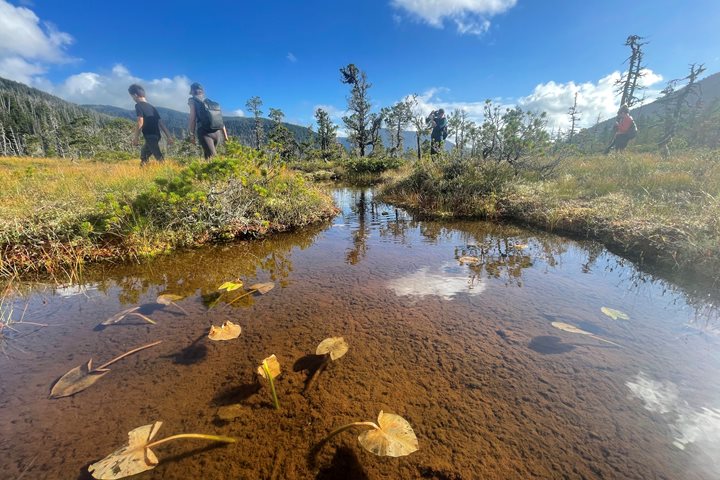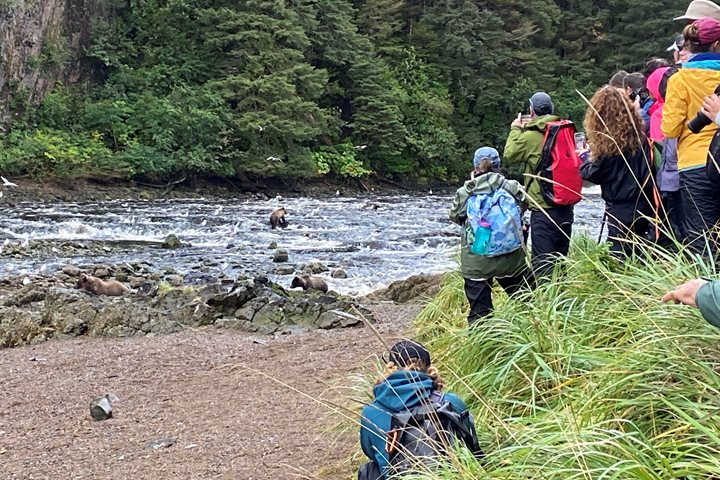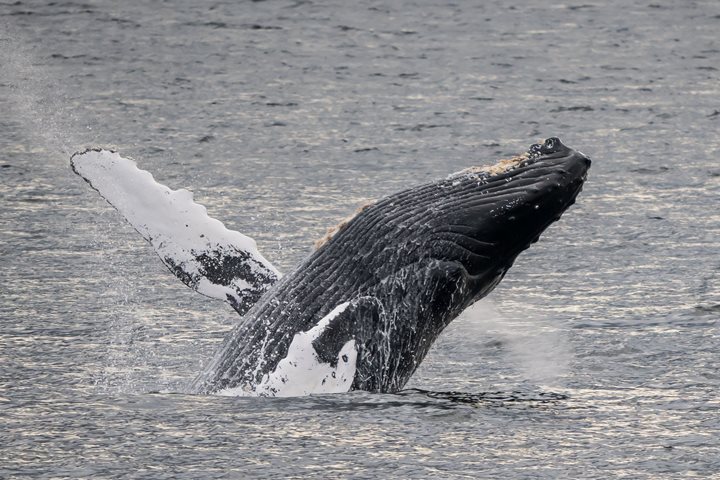Break out from the routine, change your perspective from preconceived expectations, and open yourself to new wonders and environments. That is likely the mindset of anyone who choses an expedition rather than a simple vacation.
On this first full day of exploration, the National Geographic Venture headed north through narrow tide swept channels and open straits into the mosaic landscape of Southeast Alaska. It is a place where the sea interweaves into an abrupt dark forest, built on staggering heights, lifted up by the slow collision of continental and marine tectonic plates along one of the Earth’s most ancient coastlines.
While getting settled into our cabins and shipboard life, it’s clear the National Geographic Venture is a perfect platform to carry us into this wild place. The forested slopes at first appear dark, uniform, and somewhat foreboding with the gray spires of dead Alaska yellow cedar woven into the green fabric of the living forest, likely a result of recent changes to the local climate. The narrow marine passages swirl with tidal currents, while the occasional sea lion and bald eagle mark our transit. Closer observation of the forest reveals a patchwork of vegetation; dark mature stands of Sitka spruce and Western hemlock, alpine meadows high in the mountains, avalanche and landslide scars dominated by red alder, and younger stands remnant from clear cut logging over the last 60 years.
By early afternoon we arrived in Sitkoh Bay, which strongly bears the imprint of human history overlaid on the natural environment. The Tlingit native people used this bay for millennia, harvesting salmon, plants, and the bounty of the intertidal environment. But wild nature is almost immediately apparent as we spy a brown bear and cubs, feeding on the verdant sedges growing high on the shoreline. By the end of the afternoon, we have seen more than 10 bears throughout the bay.
Next, we quietly sailed past the site of the old Chatham salmon cannery, operating for the first 70 years of the 20th century, exploiting the sockeye salmon runs that used to dominate the streams flowing into the bay. In the latter part of the century, there was a brief period of road building and heavy forest harvesting. A restoration project was eventually implemented in the Sitkoh River to promote the reestablishment of the salmon. The U.S. Forest Service now manages the lands primarily for low level recreation, and we were able to hike on the old logging road and along the shoreline to see the forest up close. A warm, sunny day also made for perfect kayaking in the calm waters.
By evening, we were all back aboard for cocktails, recap, and a delicious dinner, topped off by a presentation on the temperate rain forest environment from naturalist Linda Burback. In sum, a great day to stretch our legs, ease into the pace of ship-based exploration, and stimulate our minds.







